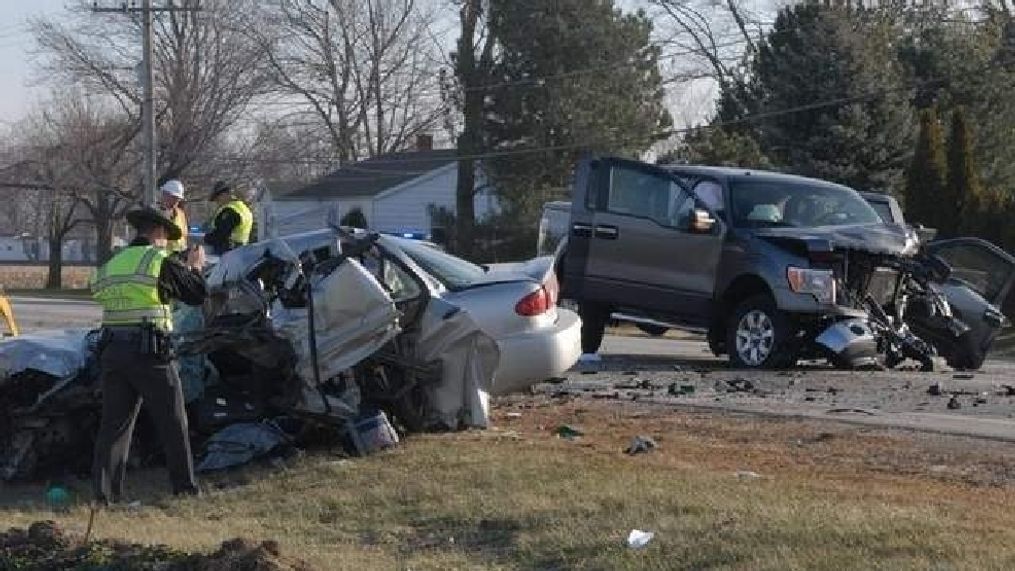

# Factors Leading to Head-On Vehicle Collisions in Ohio
Head-on vehicle collisions rank among the gravest types of traffic incidents, frequently resulting in severe injuries or fatalities. In Ohio, these accidents arise from a variety of factors, ranging from driver mistakes to external conditions. Gaining insight into the causes of head-on collisions can assist drivers in implementing preventative strategies and enhancing road safety.
## **1. Distracted Driving**
A primary factor contributing to head-on collisions in Ohio is distracted driving. When drivers divert their attention from the road, even momentarily, they risk straying into oncoming traffic. Typical distractions include:
– Texting or operating a smartphone
– Modifying the radio or GPS
– Consuming food or beverages
– Conversing with passengers
Ohio enforces stringent laws against texting while driving, yet distractions remain a substantial issue on the state’s roadways.
## **2. Driving Under the Influence (DUI)**
Alcohol and drug impairment considerably elevate the chances of head-on collisions. Intoxicated drivers may experience:
– Impaired judgment
– Delayed reaction times
– Difficulty in maintaining their lane
Ohio has strict DUI regulations, but impaired driving continues to be a significant factor in fatal accidents.
## **3. Drowsy or Fatigued Driving**
Fatigue can pose hazards comparable to alcohol impairment. Sleep-deprived drivers may inadvertently drift into oncoming traffic due to:
– Microsleeps (brief, involuntary periods of rest)
– Slower reaction times
– Diminished awareness of surroundings
Long-haul truck drivers, those working shifts, and individuals suffering from sleep disorders face heightened risks.
## **4. Speeding and Reckless Driving**
Excessive speed diminishes a driver’s capacity to respond to unexpected obstacles or traffic fluctuations. Reckless actions that contribute to head-on collisions include:
– Overtaking in no-passing zones
– Disregarding traffic signs
– Weaving erratically between lanes
Ohio law imposes severe penalties for reckless driving, yet some drivers persist in taking unnecessary chances.
## **5. Improper Passing on Two-Lane Roads**
Numerous head-on collisions in Ohio happen on rural two-lane roads where drivers attempt to overtake slower-moving vehicles. Dangerous overtaking can lead to:
– Misjudging the oncoming traffic speed
– Crossing over double yellow lines
– Inability to return to the correct lane promptly
Drivers should always adhere to passing regulations and only overtake when it is safe to do so.
## **6. Poor Road Conditions and Weather**
Ohio encounters various weather conditions that can contribute to head-on collisions, including:
– Heavy rain and flooding
– Snow and ice
– Fog that diminishes visibility
Slippery road surfaces can lead to vehicles losing control and drifting into opposing lanes. Drivers should modify their speeds and keep a safe following distance during adverse weather.
## **7. Mechanical Failures**
Vehicle failures, such as brake malfunctions or tire blowouts, can lead to drivers losing control and entering opposing traffic. Routine vehicle maintenance can help avert accidents related to mechanical issues.
## **8. Wrong-Way Driving**
Incidents of wrong-way driving frequently result in devastating head-on collisions. Contributing factors include:
– Alcohol or drug impairment
– Confusion stemming from poorly marked ramps or intersections
– Elderly drivers or those unfamiliar with the area
Ohio has instituted wrong-way detection systems on highways to mitigate these occurrences.
## **Conclusion**
Head-on vehicle collisions in Ohio are often avoidable. By minimizing distractions, adhering to traffic regulations, and adjusting to road conditions, drivers can decrease their chances of being involved in a serious accident. Public awareness, law enforcement, and infrastructure enhancements are also vital in improving the safety of Ohio’s roads for all travelers.
If you or someone you care about has been involved in a head-on collision, obtaining legal and medical support is crucial. Stay vigilant, drive responsibly, and contribute to making Ohio’s roads safer for everyone.






